
This worksheet reviews position words.
- Subject:
- English Language Arts
- Mathematics
- Science
- Social Studies
- Material Type:
- Activity/Lab
- Provider:
- TLSBooks.com
- Author:
- T. Smith Publishing
- Date Added:
- 02/26/2019

This worksheet reviews position words.
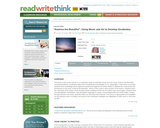
This lesson uses music and art in a vocabulary study of unfamiliar words from the song "America the Beautiful," increasing students' vocabulary while also increasing their knowledge of U.S. geography. A discussion to activate students' prior knowledge about sights and scenery throughout the United States is followed by a read-aloud and introduction to the song "America the Beautiful," which is then sung in each session of the lesson.
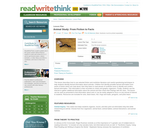
This lesson describes how to use selected fiction and nonfiction literature and careful questioning techniques to help students identify factual information about animals. Children, first, identify possible factual information from works of fiction which are read aloud, then they listen to read-alouds of nonfiction texts to identify and confirm factual information. This information is then recorded on charts and graphic organizers. Finally, students use the Internet to gather additional information about the animal and then share their findings with the class.

Students are prompted to use comparisons to discuss what they see as they picture walk through books about the ocean. They identify what these comparisons have in common to arrive at an informal name and definition of simile. They then create illustrations showing these comparisons. Next, students picture walk through two additional picture books about the ocean and comment about what they see. They are introduced to metaphor by rewording some of their comments into metaphors. They continue to note metaphors as the books are read aloud, and then name and define this new type of comparison. They again draw pictures to illustrate some of these metaphors. Students discuss why writers use these types of comparisons, then work to revise existing writing to incorporate figurative language through guided practice or independent work. Finally, students use templates to create a book on the ocean that features similes and metaphors.
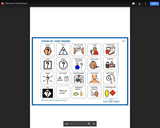
Communication board to help non-verbal students communicate using COVID terms.

In this lesson, students complete two prewriting activities, one on brainstorming ideas using story maps, and one on creating beginnings of stories. They then work on two collaborative-writing activities in which they draft an "oversized" story on chart paper. Each student works individually to read what has been written before, adds the "next sentence," and passes the developing story on to another student. The story is passed from student to student until the story is complete. In a later lesson Collaborative Stories 2: Revising, the story is revised by the groups.
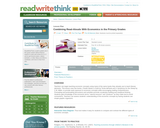
This lesson uses two books, Charlie Needs a Cloak by Tomie dePaola and A Symphony for the Sheep by C.M. Millen, to provide early exposure to economic concepts while encouraging reading comprehension. Prereading and postreading discussions and activities promote vocabulary building and analytical thinking. Students gain knowledge of the economic terms "natural resource" and "producer" as they make text-to-world connections.

In this lesson, students will use KWL charts and interactive writing as key components of organizing information. As a class, students list what they know about insects, prompted by examining pictures in an insect book. Students them pose questions they have about insects, again using picture books as a visual prompt. Students then search for answers to the questions they have posed, using Websites, read-alouds, and easy readers. Periodic reviews of gathered information become the backdrop to ongoing inquiry, discussion, reporting, and confirming information. The lesson culminates with the publishing of a collaborative question and answer book which reports on information about the chosen topic, with each student contributing one page to the book.
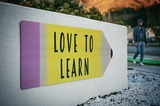
As a way to support teachers with English Language Arts (ELA) instruction during the pandemic, the NCDPI ELA team created choice boards featuring standards-aligned ELA activities.The intended purpose of these choice boards is to provide a way for students to continue standards-based learning while schools are closed. Each activity can be adapted and modified to be completed with or without the use of digital tools. Many activities can also be repeated with different texts. These standards-based activities are meant to be a low-stress approach to reinforcing and enriching the skills learned during the 2019-2020 school year. The choice boards are to be used flexibly by teachers, parents, and students in order to meet the unique needs of each learner.Exploration activities are provided for a more self-directed or guided approach to independent learning for students. These activities and sites should be used as a way to explore concepts, topics, skills, and social and emotional competencies that interest the learner.

The "I Grow" activities in this lesson will help students understand the abstract concept of time passing. Students will listen as the book When I Was Little by Jamie Lee Curtis is read aloud. They will then write and illustrate a book about themselves using a predictable pattern of text such as, "When I was little, I ____________. Now I ____________."

Using nursery rhymes and a finger play, students will learn about spatial relationships and commonly used position words. Curriculum extension activities/adaptations/integration include common objects in the classroom.

This worksheet reviews position words.
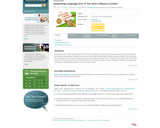
In this lesson, students will read Laura Joffe Numeroff's 'If You Give a Mouse a Cookie' to combine word-skill work with prediction and sequencing practice. Students learn about cause-effect relationships during a shared reading of the book and then complete a cloze exercise that uses context and initial consonant clues. Students then create story circles that display the events of the story and use these circles to retell the story to a peer. Finally, the students compose their own stories featuring themselves in the role of the mouse.
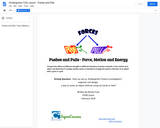
Compare the effects of different strengths or different directions of pushes and pulls on the motion of an object and determine if a design solution works as intended to change the speed or direction of an object with a push or a pull.
Driving Question: Can I as “Science Investigator”, engineer and design,
a way to move an object without using my hands or feet?

This parent guide supports parents in helping their child at home with the Kindergarten English Language Arts content.Within the folder you will access Parent Guide PDFs in FIVE Languages: Arabic, English, Hindi, Spanish, and Vietnamese to help on-going communication with caregivers.

This resource accompanies our Rethink Kindergarten ELA course. It includes ideas for use, ways to support exceptional children, ways to extend learning, digital resources and tools, tips for supporting English Language Learners and students with visual and hearing impairments. There are also ideas for offline learning.
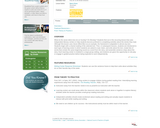
In this lesson, students engage in independent literacy centers to become proficient in completing activities about the stories they read. Although this lesson uses Seven Blind Mice as an example, the framework is adaptable to almost any text.
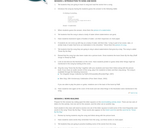
In this lesson, students will use a popular children's song that contains several high-frequency vocabulary words to assist in recognizing, reading, writing, and using the words in several contexts. Students sing the song repeatedly, while following along with a picture book that contains the lyrics and illustrations. They are then encouraged to participate in several hands-on activities to reinforce learning of the vocabulary words.
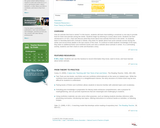
In this lesson, students will learn that building a snowman is one way to provide food for birds and animals during the winter. Students begin by listening to a book about snow. Students are then introduced to a K-W-L chart and discuss what they know about how animals find food in the winter. As students listen to Henrietta Bancroft's Animals in Winter, they listen for details about how some animals survive during the winter and record those details in the last column of the chart. To continue to build students' knowledge of the topic, they listen to additional fiction and nonfiction books and view a website about animals in winter. As a culminating activity, students use their charts to write and illustrate a story.
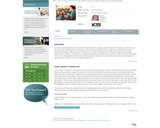
In this lesson, students choose their own reading material, respond to reading in a journal, and talk about their books daily in small groups. The teacher guides the work through structured prompts and by rotating participation with the groups. Students read at their individual levels, while heterogeneous grouping provides peer support. This lesson is a structured guideline for helping students learn to think about the books they read, and to ask questions about books shared by other students.